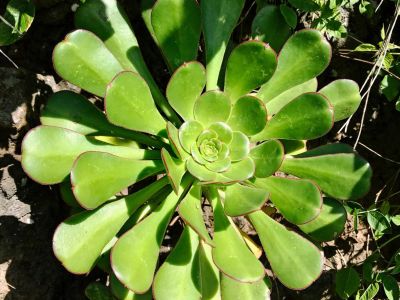The saucer plant Aeonium is a native of the Canary Islands. As such, it needs warm but not hot temperatures to thrive and has little to no cold tolerance. It is one of the largest specimens in the genus and can reach 6 feet (2 m.) tall when mature. The saucer plant succulent is not only architecturally appealing but also bears a striking inflorescence in pastel hues.
What is a Saucer Plant?
In the family Crassula, Aeonium plants are known to be easy to grow and sweet in form. The thick leaves are arranged in a rosette form with gradually larger leaves around the edge. Each green, slightly curved leaf has a prickle at the edge and is decorated with a rim of pink. The entire rosette can mature to about 1.5 feet (45.5 cm.) wide. Over time, the saucer plant Aeonium will develop a long stout stalk. After a few years, it will bear an inflorescence reaching 3 by 3 feet (1 x 1 m.) in size. The flowers are star-shaped in soft pink with yellow centers.
How to Grow a Saucer Plant
Saucer plant care is easy on this stoic plant. Start with a well-draining container and use lightly gritty but loamy soil. Good drainage is essential to prevent any rot issues, but the soil should retain a bit of moisture. Unlike many succulents, this Aeonium prefers cool to warm weather and will stop growing when temperatures are too high. It thrives in temperatures between 65 and 76 degrees F. (18-24 C.). Situate the plant where it receives good but indirect light. They can even perform beautifully in partial shade, which makes them ideal for office settings. Although it can take years to bloom, the plant will often die after it produces an inflorescence. Collect seed when ripe to propagate the plant.
Saucer Plant Care
Water the plant deeply when the soil is dry to the touch. The plant will need more water during its growing season and less when dormant. Container-grown plants should be repotted every two to three years. The container size should just about match the width of the rosette. Feed the plant during the growing season, once per month, with a diluted by half-liquid plant food. Suspend feeding when the plant is dormant. Similarly, reduce watering by half when the plant is not actively growing. You can move plants outside during spring or in mild summers.
